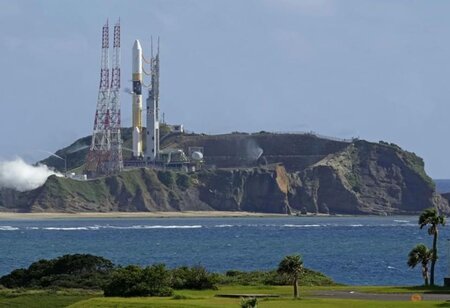Precision Lunar Landing Mission Takes Aim at History: Japan's Moon Sniper
By Consultants Review Team
 The Moon Sniper spacecraft, a key component of Japan's Smart Lander for Investigating Moon (SLIM) mission, is poised to achieve an unprecedented lunar touchdown, utilizing pinpoint technology in a historic endeavor scheduled for midnight on Saturday. Japan aspires to join the elite ranks of the United States, the Soviet Union, China, and India, which have successfully executed soft landings on the Moon. Distinctively, the SLIM craft, affectionately dubbed the "Moon Sniper" by the Japan Aerospace Exploration Agency (JAXA), incorporates cutting-edge technology, including a rolling probe developed by a major toy company, to achieve unparalleled precision in its descent.
The Moon Sniper spacecraft, a key component of Japan's Smart Lander for Investigating Moon (SLIM) mission, is poised to achieve an unprecedented lunar touchdown, utilizing pinpoint technology in a historic endeavor scheduled for midnight on Saturday. Japan aspires to join the elite ranks of the United States, the Soviet Union, China, and India, which have successfully executed soft landings on the Moon. Distinctively, the SLIM craft, affectionately dubbed the "Moon Sniper" by the Japan Aerospace Exploration Agency (JAXA), incorporates cutting-edge technology, including a rolling probe developed by a major toy company, to achieve unparalleled precision in its descent.
The lightweight SLIM craft is set to initiate its descent at midnight Japan time, with the actual touchdown expected about 20 minutes later. Notably, the mission aims for a landing within a remarkable 100 meters (330 feet) of a designated spot on the Moon's surface, a significant improvement over the customary landing zones spanning several kilometers. Success in this endeavor would mark a pivotal moment for Japan, given recent setbacks such as failed lunar missions and rocket explosions following launch.
The SLIM mission, analogous to India's triumph in August with a low-cost space program, seeks to explore an area within a crater on the Moon where the mantle, the normally inaccessible deep layer beneath the crust, is believed to be exposed. Emily Brunsden, a senior lecturer in astrophysics and director of the University of York's Astrocampus, underscores the importance of SLIM's landing precision, describing it as a "huge leap in technology" that opens the door to more specific research missions. Nevertheless, she cautions that the task remains exceptionally challenging, emphasizing the critical nature of precision due to the limited opportunities for success in such missions.
SLIM's primary objective is to investigate rocks within the lunar mantle, providing insights into the origins of the Moon and Earth. Tomokatsu Morota, an associate professor at the University of Tokyo specializing in lunar and planetary exploration, highlights the importance of the rocks exposed in the targeted crater. The spacecraft's precision becomes crucial in navigating the uneven and rocky lunar terrain, as it aims to capture images using an onboard camera.
JAXA, with a history of successful pinpoint landings on asteroids, faces a heightened challenge on the Moon, where gravity is stronger. Additionally, the SLIM mission carries aspirations to unravel the mystery surrounding the Moon's potential water resources, a key factor in future lunar commercialization and the establishment of bases. Morota emphasizes the significance of water at the lunar poles for the possibility of lunar commercialization.
The SLIM spacecraft features a spherical metal probe, slightly larger than a tennis ball, equipped with a camera, jointly developed by JAXA and Japanese toy giant Takara Tomy. In a playful touch, JAXA has introduced an online video game titled "SLIM: The pinpoint moon landing game."
Despite more than 50 years since the first human Moon landing, countries and private companies worldwide are actively pursuing lunar exploration. Challenges, including crash landings and communication failures, persist. Notably, a recent incident involving a private U.S. lunar lander underscores the complexity of lunar missions. Japan, having faced previous lunar mission failures in 2022 and April of the same year, seeks redemption through the SLIM mission, hoping to achieve a milestone in lunar exploration.




